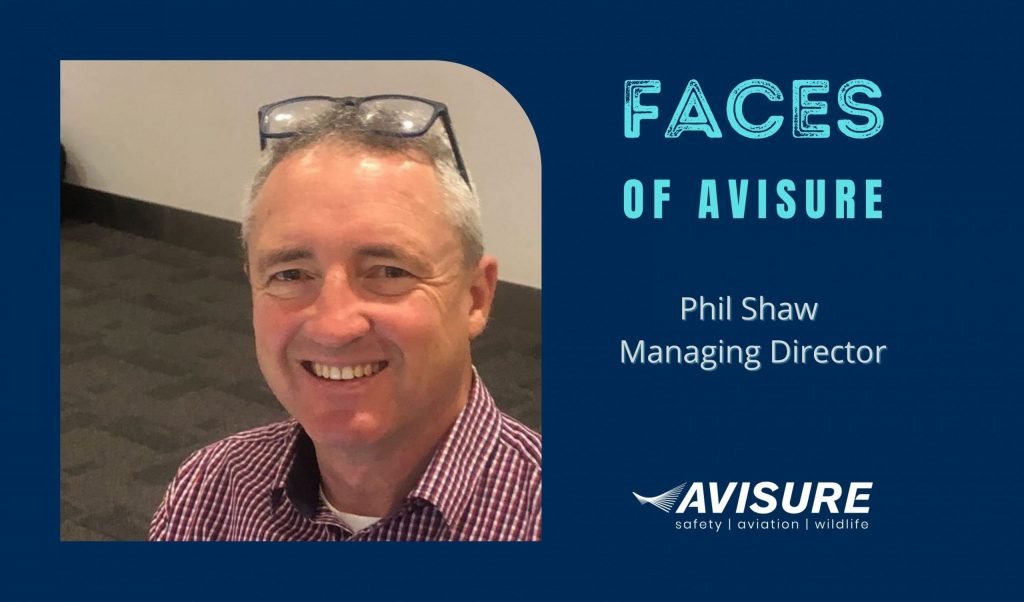Phil Shaw—Founder and Managing Director
A toss of the coin literally decided the fate of Phil Shaw’s fledgling wildlife hazard management career. After Shaw completed a biological science degree at university, he was convinced there was a better way to manage pests such as termites. So he established Sanctuary Pest Management in northern NSW in 1994 to implement more environmentally sound termite management, rather than relying on the organophosphates then widely used. At the same time, he had plan B up his sleeve—undertaking a Diploma of Education, so that he could teach science if the new business didn’t thrive.
When he completed his Dip. Ed, he was faced with a crossroads decision: take up the offer of a full-time job teaching science or continue with his not-yet profitable start-up. ‘I was so torn’, he says, ‘to continue with something that only made $5000 in its first year, or get a “real” job teaching science?’ The fateful coin toss decided, and 27 years later, Avisure, regarded as a leader in the field, not only in Australia, but globally, works with clients across Australia and in North America, the Middle East and Asia.
An $8 million ibis strike on a Qantas A300 in December 1995, ‘kickstarted a whole program around the ibis that we were right in the middle of,’ Shaw says. In fact, the Ibis Management Coordination Group set up then has just celebrated its 25th anniversary.
He was asked to develop a management plan to manage the ibis population, particularly around the Gold Coast Airport, and went on to undertake flora and fauna assessments for other Queensland airports. The disbanding of the Civil Aviation Authority’s Bird Hazard Investigation Unit in 1991 had left a gap in expertise, and ‘slowly and surely’, Shaw says, ‘we became the “go-to” for wildlife hazard management in Australia’.
In 2008, Shaw says, Avisure became a separate entity from sister company, Ecosure, to enable Avisure to target aviation wildlife management more effectively. Fast forward to 2021: Shaw says ‘coming out of COVID will be interesting. We know bird and animal populations have increased around airports, and there’s been cost-cutting in both active and habitat management, so we’re expecting a period of higher-than-usual risk.’
And what about the next 27 years? In that time, Shaw would like to see an industry-wide approach taken to wildlife hazard management. ‘Obviously, airports are a major player in managing habitat around take-off and landing areas, but the approach now is too airport centric,’ he says.
‘Changes really have to happen in the tower and the cockpit, so that ATC and pilots are trained and able to assess risk on the go, and we’ve got to be better at giving them that information in real time.
‘It’s that, plus the regulator, plus those responsible for land use in the vicinity of the airport—they’re all part of the puzzle. Change is happening, but it’s not integrated systematically. If it was, it would make for a better place for industry, and a better place for us all to fly,’ Shaw concluded.

